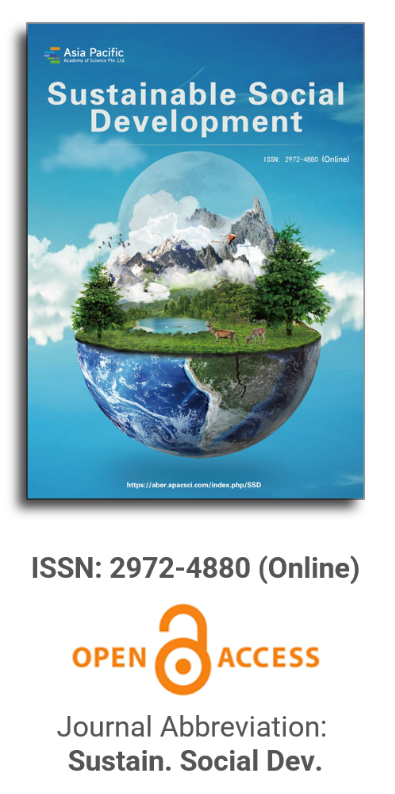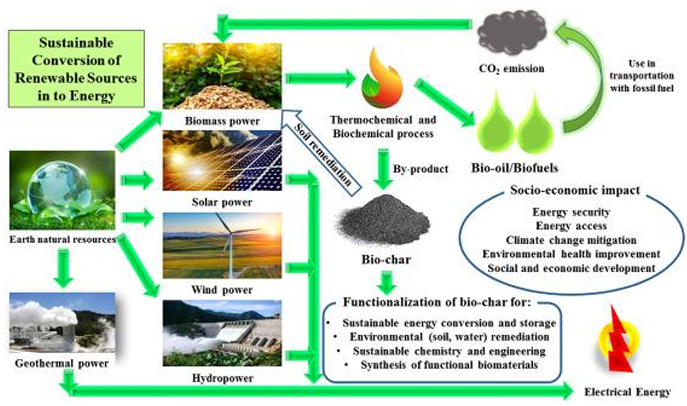
Asia Pacific Academy of Science Pte. Ltd. (APACSCI) specializes in international journal publishing. APACSCI adopts the open access publishing model and provides an important communication bridge for academic groups whose interest fields include engineering, technology, medicine, computer, mathematics, agriculture and forestry, and environment.

Variation analysis in historical demographic distribution within urban agglomeration: Experimental evidence from the Wuhan “1+8” City Circle
Vol 2, Issue 4, 2024
Download PDF
Abstract
Understanding the spatial distribution of population is crucial in regional research, as it informs the development of effective population policies, long-term regional planning, and the balanced growth of the economy, resources, and environment. This study employs a quantitative approach to construct a research framework using demographic data to elucidate the historical population dynamics within the Wuhan “1+8” City Circle (WCC). The study examines whether the central city and its peripheral cities have experienced coordinated growth or if a town has dominated. The findings reveal several key findings and insights: Wuhan, as the core city of the WCC and the capital of Hubei Province, shows population growth driven not only by natural increases but also by a significant population siphoning effect, with Hongshan of Wuhan experiencing the most pronounced impact; from 2010 to 2020, the WCC’s overall population distribution displayed a dispersal trend, while population density continued to concentrate, particularly around Wuhan and its vicinity, thereby establishing Wuhan as a central population hub. Gender distribution within the WCC generally reflects a higher proportion of males than females, with exceptions in Jiang’an of Wuhan and Huangshigang of Huangshi, where females outnumber males. This pattern may result from attracting male labor to industrial parks and female labor to service sectors. In summary, the WCC needs to refine its regional development strategies, especially for crucial siphoning areas such as Hongshan of Wuhan and Wuchang of Wuhan, to foster balanced regional growth. Additionally, policies to encourage childbirth, enhance elderly care services, and implement a comprehensive population data monitoring and forecasting system are crucial for addressing demographic shifts and achieving sustainable development.
Keywords
References
- Guo Q, Ma X. How Does the Digital Economy Affect Sustainable Urban Development? Empirical Evidence from Chinese Cities. Sustainability. 2023;15(5): 4098. doi: 10.3390/su15054098
- Hu B, Liu Y, Zhang X, et al. Understanding regional talent attraction and its influencing factors in China: From the perspective of spatiotemporal pattern evolution. PloS One. 2020; 15(6): e0234856. doi: 10.1371/journal.pone.0234856
- Bairoliya N, Miller R. Social Insurance, Demographics, and Rural-Urban Migration in China. Regional Science and Urban Economics. 2021; 91: 103615. doi: 10.1016/j.regsciurbeco.2020.103615
- Liu T, Peng R, Zhuo Y, et al. China’s changing population distribution and influencing factors: Insights from the 2020 census data. Acta Geographica Sinica. 2022; 77(2): 381-394. doi: 10.11821/dlxb202202008
- Liu Y, Xu Y, Liu Y. Population Growth and Temporal-spatial Differentiation in Loess Plateau Region in the last 2000 Years. Progress in Geography. 2012; 31(2): 156-166. doi: 10.11820/dlkxjz.2012.02.004
- Liang H, Liu Y. Study on spatio-temporal change and simulation of population in Beijing based on census data. Acta Geographica Sinica. 2014; 69(10): 1487-1495. doi: 10.11821/dlxb201410008
- Xiao H, Tian H, Zhu P, et al. The Dynamic Simulation and Forecast of Urban Population Distribution Based on the Multi-agent System. Progress in Geography. 2010; 29(3): 347-354. doi: 10.11820/dlkxjz.2010.03.014
- Liu R, Feng Z, Yang Y, et al. Research on the Spatial Pattern of Population Agglomeration and Dispersion in China. Progress in Geography. 2010; 29(10): 1171-1177. doi: 10.11820/dlkxjz.2010.10.003
- Ma Y, Lu Y, Zhang L. Evolvement of Spatial Pattern of Population with Data at County Level in Jiangsu Province. Progress in Geography. 2012; 31(2): 167-175. doi: 10.11820/dlkxjz.2012.02.005
- Yan D, Sun W, Wang Y, et al. Change in distribution and growth shifts of population in the Yangtze River Delta and influencing factors. Progress in Geography. 2020; 39(12): 2068-2082. doi: 10.18306/dlkxjz.2020.12.009
- Xu D, Xu Y. Spatio-temporal pattern of registered population in Nanjing from 1928 to 2017. Acta Geographica Sinica. 2022; 77(10): 2439-2456. doi: 10.11821/dlxb202210003
- Dong N, Yang X, Cai H. A method for demographic data spatialization based on residential space attributes. Progress in Geography. 2016; 35(11): 1317-1328. doi: 10.18306/dlkxjz.2016.11.002
- Yin X, Wei H, Li Y, et al. Detecting spatiotemporal variation of population in different types of regions in China based on the census data of 2000, 2010 and 2020. Progress in Geography. 2023; 42(3): 452-463. doi: 10.18306/dlkxjz.2023.03.004
- Su F, Zhang P. Spatio-temporal Dynamics of Population Distribution in the Middle and Southern Liaoning Urban Agglomeration. Progress in Geography. 2010; 29(1): 96-102. doi: 10.11820/dlkxjz.2010.01.013
- Li M, Chen J, Zhang H, et al. Fine-grained Population Estimation and Distribution Characteristics in Shanghai. Journal of Geo-Information Science. 2017; 19(6): 800-807. doi: 10.3724/SP.J.1047.2017.00800
- Wang J, Yang X, Shi R. Spatial Distribution of the Population in Shandong Province at Multi-Scales. Progress in Geography. 2012; 31(2): 176-182. doi: 10.11820/dlkxjz.2012.02.006
- Gao C, Jin F, Fu J, et al. Spatial pattern of population and its evolution in South Africa during 1996-2011. Progress in Geography. 2013; 32(7): 1167-1176. doi: 10.11820/dlkxjz.2013.07.019
- Gutiérrez E, Moral‐Benito E, Oto‐Peralías D, et al. The spatial distribution of population in Spain: An anomaly in European perspective. Journal of Regional Science. 2023; 63(3): 728-750. doi: 10.1111/jors.12638
- Beltrán Tapia FJ, Díez-Minguela A, Martinez-Galarraga J. The shadow of cities: size, location and the spatial distribution of population. The Annals of Regional Science. 2021; 66(3): 729-753. doi: 10.1007/s00168-020-01036-9
- Xu X, Tan M, Liu X, et al. Stability and Changes in the Spatial Distribution of China’s Population in the Past 30 Years Based on Census Data Spatialization. Remote Sensing. 2023; 15(6): 1674. doi: 10.3390/rs15061674
- Khawaldeh B, Abu-Sabha K. Temporal and Spatial Variation of Geographical Population Distribution in Jordan for the Period (1994–2015) Using GIS. Dirasat: Human and Social Sciences. 2022; 49(5): 23-43. doi: 10.35516/hum.v49i5.2774
- Zhang J, Chen S, Damas WM. Spatial pattern and its evolution of population in Tanzania. Progress in Geography. 2017; 36(5): 610-617. doi: 10.18306/dlkxjz.2017.05.008
- Hassanien MAA. Using Digital Tools for Monitoring and Analysing Spatial Variations of Population Distribution in the City of Al-Madinah Al-Munawarah, Kingdom of Saudi Arabia, 2004-2020. Geographia Technica. 2023; 18(1): 85-107. doi: 10.21163/GT_2023.181.07
- Qi W, Liu S, Liu Z. The novel pattern and driving factors of population spatial distribution on both sides of the “Hu Line” based on seventh census in China. Acta Geographica Sinica. 2022; 77(12): 3023-3040. doi: 10.11821/dlxb202212006
- Feng Z, Yang L, Yang Y, et al. The Process of Population Agglomeration/Shrinking and Changes in Spatial Pattern in the Beijing-Tianjin-Hebei Metropolitan Region. Journal of Geo-information Science. 2013; 15(1): 11. doi: 10.3724/sp.j.1047.2013.00011
- Parveen S, Siddiqui F. Spatial regularity in the distribution of female population and female workers: a study of Sehore Municipal Council, Madhya Pradesh (India). GeoJournal. 2019; 85(3): 731-745. doi: 10.1007/s10708-019-09989-x
- Li F, Zhou J, Wei W, et al. Spatial Distribution Pattern and Evolution Characteristics of Elderly Population in Wuhan Based on Census Data. Land. 2023; 12(7): 1350. doi: 10.3390/land12071350
- Zhang L, Leng L, Zeng Y, et al. Spatial distribution of rural population using mixed geographically weighted regression: Evidence from Jiangxi Province in China. PLOS ONE. 2021; 16(4): e0250399. doi: 10.1371/journal.pone.0250399
- Pénzes J, Tátrai P, Pásztor IZ. Changes in the spatial distribution of the Roma population in Hungary in recent decades. Területi Statisztika. 2018; 58(1): 3-26. doi: 10.15196/ts580101
- Pénzes J, Pásztor IZ, Tátrai P, et al. Roma Population in Hungary - Spatial Distribution and its Temporal Changes. DETUROPE—The Central European Journal of Tourism and Regional Development. 2019; 11(3): 138-159. doi: 10.32725/det.2019.030
- Gao X, Wang X, Zhu B. The distribution of Chinese minority populations and its change based on the study of the Hu Huanyong line. International Journal of Anthropology and Ethnology. 2017; 1(1). doi: 10.1186/s41257-017-0004-9
- Chen C. Changes in the Spatial Distribution of the Employed Population in the Yangtze River Delta Region since the 21st Century: An Analysis and Discussion Based on Census Data. Land. 2023; 12(6): 1249. doi: 10.3390/land12061249
- Yin XS, Hussain J, Kui Z. The Spatial Distribution Pattern and Formation Mechanism of the Spatial Agglomeration of Chinese Higher Education Population: A Cross-Province Comparison. Applied Spatial Analysis and Policy. 2022; 15(2): 315-338. doi: 10.1007/s12061-021-09392-5
- Wei L, Liu H, Wu L. Spatial distribution of floating population in Beijing, Tianjin and Hebei Region and its correlations with synergistic development. Mathematical Biosciences and Engineering. 2023; 20(3): 5949-5965. doi: 10.3934/mbe.2023257
- Huang D, Lang Y, Liu T. Evolving population distribution in China’s border regions: Spatial differences, driving forces and policy implications. PLOS ONE. 2020; 15(10): e0240592. doi: 10.1371/journal.pone.0240592
- Zhao D, Li JY, Yan HW, et al. Spatial distribution characteristics of urban potential population in Shenyang City based on GIS and RS. Chinese Journal of Applied Ecology. 2017; 28(8): 2697-2704. doi: 10.13287/j.1001-9332.201708.018
- Chen R, Yan H, Liu F, et al. Multiple Global Population Datasets: Differences and Spatial Distribution Characteristics. ISPRS International Journal of Geo-Information. 2020; 9(11): 637. doi: 10.3390/ijgi9110637
- Li P, Lu M. Urban Systems: Understanding and Predicting the Spatial Distribution of China’s Population. China & World Economy. 2021; 29(4): 35-62. doi: 10.1111/cwe.12380
- Sun L, Wang J, Chang S. Population Spatial Distribution Based on Luojia 1–01 Nighttime Light Image: A Case Study of Beijing. Chinese Geographical Science. 2021; 31(6): 966-978. doi: 10.1007/s11769-021-1240-6
- Zhang G, Rui X, Poslad S, et al. A Method for the Estimation of Finely-Grained Temporal Spatial Human Population Density Distributions Based on Cell Phone Call Detail Records. Remote Sensing. 2020; 12(16): 2572. doi: 10.3390/rs12162572
- Rahimi F, Sadeghi-Niaraki A, Ghodousi M, et al. Modeling Population Spatial-Temporal Distribution Using Taxis Origin and Destination Data. Sustainability. 2021; 13(7): 3727. doi: 10.3390/su13073727
- Paige J, Fuglstad GA, Riebler A, et al. Spatial aggregation with respect to a population distribution: Impact on inference. Spatial Statistics. 2022; 52: 100714. doi: 10.1016/j.spasta.2022.100714
- Hilario L, Duka JA, Mabalot MI, et al. Forecasting Urban Population Distribution of Iloilo City Using Gis and Spatial Autocorrelation Models. The International Archives of the Photogrammetry, Remote Sensing and Spatial Information Sciences. 2021; XLVI-4/W6-2021: 185-192. doi: 10.5194/isprs-archives-xlvi-4-w6-2021-185-2021
- Huang Y, Zhao C, Song X, et al. A semi-parametric geographically weighted (S-GWR) approach for modeling spatial distribution of population. Ecological Indicators. 2018; 85: 1022-1029. doi: 10.1016/j.ecolind.2017.11.028
- Niwa K, Kaneda T. Forecasting and Visualizing Spatial Distributions of Indoor and Outdoor Population in Sakae, Nagoya Using Mobile Phone Location Data. AIJ Journal of Technology and Design. 2023; 29(71): 538-542. doi: 10.3130/AIJT.29.538
- Lai Z, Li S, Lin J, et al. Fine‐scale simulation of spatial population distribution by coupling GA-ABM and big data: A case study of Dongguan, China. Transactions in GIS. 2023; 27(4): 1263-1286. doi: 10.1111/tgis.13068
- Kanevski M. Unsupervised learning of Swiss population spatial distribution. PLOS ONE. 2021; 16(2): e0246529. doi: 10.1371/journal.pone.0246529
- Zhang Y, Zhang Y, Huang B, et al. A hybrid model for high spatial and temporal resolution population distribution prediction. International Journal of Digital Earth. 2022; 15(1): 2268-2295. doi: 10.1080/17538947.2022.2155718
- Zou Y, Zhang S, Min Y. Exploring Urban Population Forecasting and Spatial Distribution Modeling with Artificial Intelligence Technology. Computer Modeling in Engineering & Sciences. 2019; 119(2): 295-310. doi: 10.32604/cmes.2019.03873
- Wang Y, Yue X, Li C, et al. Relationship between Urban Three-Dimensional Spatial Structure and Population Distribution: A Case Study of Kunming’s Main Urban District, China. Remote Sensing. 2022; 14(15): 3757. doi: 10.3390/rs14153757
- Ye J, Hu Q, Ji P, et al. The effect of interurban movements on the spatial distribution of population. Frontiers in Physics. 2022; 10. doi: 10.3389/fphy.2022.967870
- Stawarz N, Sander N. The Impact of Internal Migration on the Spatial Distribution of Population in Germany over the Period 1991-2017. Comparative Population Studies. 2020; 44. doi: 10.12765/cpos-2020-06
- Chu N, Wu X, Zhang P, et al. Spatial Distribution Pattern Evolution of the Population and Economy in Russia since the 21st Century. International Journal of Environmental Research and Public Health. 2022; 20(1): 684. doi: 10.3390/ijerph20010684
- Li J, Huang W. Research on Evolution of Population and Economy Spatial Distribution Pattern in Ecologically Fragile Areas: A Case Study of Ningxia, China. Frontiers in Environmental Science. 2022; 10. doi: 10.3389/fenvs.2022.814569
- Zhao M, Liu S, Qi W. Exploring the differential impacts of urban transit system on the spatial distribution of local and floating population in Beijing. Journal of Geographical Sciences. 2017; 27(6): 731-751. doi: 10.1007/s11442-017-1403-7
- Jin J, Kim D. Expansion of the subway network and spatial distribution of population and employment in the Seoul metropolitan area. Urban Studies. 2017; 55(11): 2499-2521. doi: 10.1177/0042098017725476
- Zhong J, Lu T. Spatial pattern of population distribution and its correlation with relief amplitude in southwestern China. Acta Ecologica Sinica. 2018; 38(24): 8849-8860. doi: 10.5846/stxb201712292352
- Zhao T, Song B, Chen Y, et al. Analysis of Population Distribution and Its Spatial Relationship with Terrain Elements in the Yarlung Zangbo River, Nyangqu River and Lhasa River Region, Tibet. Journal of Geo-Information Science. 2017; 19(2): 225-237.
- Peng Y, Liu J, Zhang T, et al. The Relationship between Urban Population Density Distribution and Land Use in Guangzhou, China: A Spatial Spillover Perspective. International Journal of Environmental Research and Public Health. 2021; 18(22): 12160. doi: 10.3390/ijerph182212160
- Chen Y, Zhang Z, Lang L, et al. Measuring the Spatial Match between Service Facilities and Population Distribution: Case of Lanzhou. Land. 2023; 12(8): 1549. doi: 10.3390/land12081549
- Tan J, Wang X, Pan J. The effect of population distribution measures on evaluating spatial accessibility of primary health-care institutions: A case study from China. Geospatial Health. 2021; 16(1). doi: 10.4081/gh.2021.936
- Chang YY. An analysis of the spatial distribution of population and housing: The case of Daejeon, South Korea. Geographical review of Japan series B. 2022; 95(1): 21-36. doi: 10.4157/geogrevjapanb.95.21
- Ito MI, Ohnishi T. Evaluation of the Heterogeneous Spatial Distribution of Population and Stores/Facilities by Multifractal Analysis. Frontiers in Physics. 2020; 8. doi: 10.3389/fphy.2020.00291
- Lee YH, Lee JS, Baek SC, et al. Spatial Equity with Census Population Data vs. Floating Population Data: The Distribution of Earthquake Evacuation Shelters in Daegu, South Korea. Sustainability. 2020; 12(19): 8046. doi: 10.3390/su12198046
- Castells-Quintana D, Krause M, McDermott TKJ. The urbanising force of global warming: the role of climate change in the spatial distribution of population. Journal of Economic Geography. 2020; 21(4): 531-556. doi: 10.1093/jeg/lbaa030
- Ning X, Li Y, Gao G, et al. Temporal and spatial characteristics of high temperatures, heat waves, and population distribution risk in China from 1951 to 2019. Environmental Science and Pollution Research. 2023; 30(42): 96629-96646. doi: 10.1007/s11356-023-28955-2
- Kang JY, Jung J, Kim K. COVID-19 Vaccine Rollout Plans Should Consider Spatial Distribution of Age-Specific Population. The Professional Geographer. 2023; 75(6): 1034-1044. doi: 10.1080/00330124.2023.2215851
- Song G, Zhang C, Xiao L, et al. Influence of Varied Ambient Population Distribution on Spatial Pattern of Theft from the Person: The Perspective from Activity Space. ISPRS International Journal of Geo-Information. 2022; 11(12): 615. doi: 10.3390/ijgi11120615
- Algahtany M, Kumar L, Barclay E, et al. The spatial distribution of crime and population density in Saudi Arabia. Crime Prevention and Community Safety. 2017; 20(1): 30-46. doi: 10.1057/s41300-017-0034-3
- Lyu Y, Jiang F. Spatial and temporal distribution of population in urban agglomerations changes in China. Scientific Reports. 2022; 12(1). doi: 10.1038/s41598-022-12274-6
- Liu T, Qi Y, Cao G. China’s floating population in the 21st century: uneven landscape, influencing factors, and effects on urbanization. Acta Geographica Sinica. 2015; 70(4): 567-581. doi: 10.11821/dlxb201504005
- Sun P, Di J, Yuan C, et al. Economic growth targets and green technology innovation: mechanism and evidence from China. Environmental Science and Pollution Research. 2022; 30(2): 4062-4078. doi: 10.1007/s11356-022-22493-z
- Sun B, Hua J, Li W, et al. Spatial structure change and influencing factors of city clusters in China: from monocentric to polycentric based on population distribution. Progress in Geography. 2017; 36(10): 1294-1303. doi: 10.18306/dlkxjz.2017.10.011
- Liao W, Wang H, Xu J. The Spatial Structure Characteristic and Road Traffic Accessibility Evaluation of A-Level Tourist Attractions within Wuhan Urban Agglomeration in China. 3C Tecnología_Glosas de Innovación Aplicadas a la Pyme. 2023; 12(2): 388-409. doi: 10.17993/3ctecno.2023.v12n3e45.388-409
- Ying S, Zhang N, Wang K, et al. Virtual network analysis of Wuhan 1+8 City Circle based on Sina microblog user relations. Open Geospatial Data, Software and Standards. 2017; 2(1). doi: 10.1186/s40965-017-0017-4
- Qi W, Zhao M, Liu S. Spatial statistics and regional types evolution of China’s county-level floating population during 1982-2010. Acta Geographica Sinica. 2017; 72(12): 2131-2146. doi: 10.11821/dlxb201712002
- Wang H, Ni Y, Sun L, et al. Hierarchical visualization of geographical areal data with spatial attribute association. Visual Informatics. 2021; 5(3): 82-91. doi: 10.1016/j.visinf.2021.09.001
- Mitchell A. The ESRI Guide to GIS Analysis: Geographic Patterns & Relationships. ESRI Press; 1999.
- Xu J, Liao W, Fong CS. Identification and simulation of traffic crime risk posture within the central city of Wuhan in China. In: Proceedings of the Second International Conference on Geographic Information and Remote Sensing Technology (GIRST 2023); 21-23 July 2023; Qingdao, China. doi: 10.1117/12.3007821
- Wang H, Xu J, Lim NHH, et al. The impact of climate change on China’s central region grain production: evidence from spatiotemporal pattern evolution. AIMS Geosciences. 2024; 10(3): 460-483. doi: 10.3934/geosci.2024024
- Getis A, Ord JK. The Analysis of Spatial Association by Use of Distance Statistics. Geographical Analysis. 1992; 24(3): 189-206. doi: 10.1111/j.1538-4632.1992.tb00261.x
- Wuhan adds 1.2 million new residents! This district has the largest permanent population. Available online: http://news.cjn.cn/zjzycsqpd/wh_20023/202204/t4014204.htm (accessed on 7 July 2024).
- These five counties and cities in Huanggang are known as major counties for migrant workers, and one of them ranks first in the city in comprehensive strength. Available online: https://www.sohu.com/a/286131331_100052351 (accessed on 7 July 2024).
- Hubei Provincial People’s Government. The aging of Wuhan’s population continues to increase, with people aged 60 and above accounting for 20.95% of the total population. Available online: https://www.hubei.gov.cn/hbfb/szsm/201801/t20180119_1547346.shtml (accessed on 6 June 2024).
Supporting Agencies
Copyright (c) 2024 Wanying Liao, Dongzi Wu, Zixin Guo, Chunping Zhao, Jiajun Xu, Youqing Xu
License URL: https://creativecommons.org/licenses/by/4.0/

This site is licensed under a Creative Commons Attribution 4.0 International License (CC BY 4.0).

Prof. Kittisak Jermsittiparsert
University of City Island, Cyprus






It is with deep regret that we announce the cancellation of the Forum on Sustainable Social Development & Computing and Artificial Intelligence, originally scheduled for June 15, 2025.

